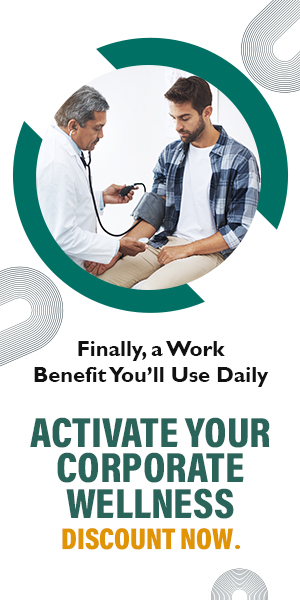Movement
Exercises To Reduce Knee Pain: UR.Life Protocol
If knee pain has made it impossible for you to go about your daily routine, try these 5 simple rehabilitation exercises to get rid of knee pain and bounce back in no time.

Have you ever wondered what allows your body to move or bend freely without any problems? It’s the flexibility of the joints, especially the knees.
Knee joints are one of the strongest and most important joints in our body. These tendons, muscles, and ligaments work together like a well-oiled machine to support an active life. Over time, the capability of our body declines, and eventually, older adults develop knee pain. Knee pain is one of the most common problems faced by individuals—be they athletes, daily walkers, or working professionals. A 2020 study published in the Lancet reports that 1 in 6 people in the world is affected with knee pain, mainly resulting from wear and tear in the knee cartilage.
Unlock insider access to the best movement plans for free! Sign up today.
Related story: The World’s Greatest Stretch: Why Everyone Should Do It Every Day
We spoke to Dr. Vinay Aindala, senior physiotherapist at UR.Life Studio, Apollo Health City, Jubilee Hills, Hyderabad, about knee pain occurs and the best approach to manage knee pain.
How Does Knee Pain Occur?
Dr. Vinay explains that our kneecaps consist of 4 different ligaments that connect bones to each other and provide support and stability.
- Anterior cruciate ligament (ACL): It is a ligament situated in the middle of the knee and is responsible for controlling the rotation and forwards shifting of the shin bone.
- Posterior cruciate ligament (PCL): This ligament is in the back of the knee that prevents the backward motion of the shin bone.
- Medial collateral ligament (MCL): It delivers stability to the inner knee.
- Lateral collateral ligament (LCL): Gives stability to the outer knee.
According to Dr. Vinay, knee pain is commonly caused in the anterior cruciate ligament (ACL) due to extensive movement of lower limbs, where even the shorter duration of weight-bearing and constant knee bending during exercise.
Relted story: Walk 15 Minutes Thrice A Day To Prevent Knee Pain
Other Causes of Knee Pain
Knee muscles and tendons are connected to the hips, hamstrings, glutes, calves, and quad strings. All these muscles work together to support the joints during movement.
Osteoarthritis is a common type of knee arthritis that occurs when joint structures wear and tear. It usually happens due to previous injuries or ageing. The soft tissues and cartilage in the joint that acts as a cushion, erode with age or due to heavy weights. This makes movement painful.
Some common knee problems are sprained ligaments, meniscus tears, tendinitis, torn knee cartilage, collateral ligament injury, baker’s cyst, cruciate ligament injury, and patellar tendonitis. If you have a previous knee injury that wasn’t treated appropriately, it may flare up now and then.
Relted story: 5 Signs That Your Workstation Isn't Ergonomic
Knee osteoarthritis
Knee osteoarthritis is a chronic degenerative disease. Most adults experience knee pain when sitting cross-legged. When someone is suffering from knee pain, he/she may show apparent signs such as:
- The knee appears disfigured
- Can't put weight or pressure on the leg
- The pain is unbearable
- Immediate swelling, tingling, or numbness below or around the knee
- Experience sharp pain when stretching legs, climbing or going down the stairs
Related story: The Many Benefits Of Physiotherapy: Pain Management Guide For Desk Jobs
How To Prevent Knee Pain?
Dr. Vinay explains, “Pain in the knee joint is because of direct trauma to the joint, repeated stress on the joint and ageing of the joint. If you are experiencing pain while sitting, it may be because your sitting posture is incorrect or you have been sitting for a prolonged period. Incorporating changes in your lifestyle, and correcting your sitting posture can prevent knee pain from occurring or deteriorating further”.
- Always keep feet flat on the ground and knees bent at a 90-degree angle with your hips when sitting
- Make sure to keep your legs straight and parallel to each other while sitting
- Refrain from putting your feet back while sitting on a chair, although you can stretch forward
- Rest your knees enough after a constant activity like after a workout, standing or sitting for long
- Maintain ideal weight according to your body type and height to decrease the chances of developing osteoarthritis.
- Choose footwear with a good fit for proper alignment of legs, balance and reduced knee pain
- If you have to kneel frequently, wear knee pads to prevent ligament tear
Related story: 15-Minute Mobility Routine To Relax Stiff Muscles
Knee Exercises To Reduce Knee Pain
1. Static Quadriceps Exercise
- Sit on the floor, your back against the wall. Fold your right leg and extend your left leg in front of you.
- Place a small rolled towel just below your left knee.
- Press the towel by your left knee towards the ground. Pull your toes towards yourself while pushing the towel.
- Avoid arching your back or hunching your shoulder joint.
- Hold the knee press for 7 to 10 seconds, then relax your leg.
- Repeat on the other leg. Do this 10 to 15 times.
Related story: 5 Desk Exercise Equipment for Working Professionals
2. Static Hamstring Stretch
- Lay on your back with the injured leg, bent and toes up.
- Shove your heels into the ground and pull back without gliding your heels.
- Hold this position for 10 seconds and then relax.
- Repeat this 15 times.
Related story: Manage Ankylosing Spondylitis With Physiotherapy, Live Pain-Free
3. Straight Leg Raise
- For this, you can sit or lie on the floor.
- When sitting, keep one feel flat on the floor and stretch out your injured leg straight. Point the toes on your injured leg straight up parallel to the floor.
- When lying, bend your non-injured leg making an inverted 'V' with feet flat on the floor. Stretch out your injured leg straight. Point the toes on your injured leg straight up a few inches off the floor.
- You should feel the tension in your thigh muscles.
- Hold for 10 seconds. Repeat 15 times.
Related story: Managing Fibromyalgia In The Workplace
4. Dynamic Quadriceps Exercise
- Sit on a chair or an elevated platform keeping your knees bent at a 90-degree angle. The feet should be a little suspended above the floor.
- Raise your right leg slowly and stretch forward till you feel your quad muscles tighten. Hold it tight for 5 seconds and lower your leg.
- Perform the same exercise with your left leg. Repeat 15 times.
Unlock insider access to the best movement plans for free! Sign up today.
Rehabilitation Programs Offered At UR.Life
UR Life Studio offers the following programs under its Lifestyle Management and Therapeutic Programs (LMTP) unit:
- Cardiac Rehabilitation
- Pulmonary Rehabilitation
- Neuro Rehabilitation
- Ortho Rehabilitation
- Paediatric Rehabilitation
- Geriatric Rehabilitation
- Obesity Management
- Diabetes management
The following are the USPs of LMTP:
- Holistic Rehabilitation Approach: involves the medical, physical, and mental aspects of overall health
- Telemetry Supervised Rehabilitation: a state-of-the-art technique to provide optimal health care
- Hydrotherapy
- Six Minutes Walk Test
- Hydraulics (circuit training studio)
- VO2 max testing (equipment under servicing)
- Myo motion analysis (equipment under servicing)
- Detailed Physical Assessment
- Wellbeing Counselling
- Diet Counselling
With the UR.Life Corporate Wellness programme, we help you to invest in your well-being through seamless interventions and targeted medical treatments. Our holistic wellness approach caters to all aspects of your well-being. We ensure that you are able to bring your whole self to work.
With our medical professionals by your side, routine health check-ups will never be an issue. Advanced laboratory technologies back UR.Life’s Occupational Health Centers (OHC), and with highly qualified experts/technicians, we’re committed to delivering trusted and quality recommendations, modifications and advice to you.
Click here to learn more about the UR.Life Corporate Wellness programme and unlock better health.
The article has been verified by Dr. Vinay Aindala, senior physiotherapist at UR.Life Studio, Apollo Health City, Jubilee Hills, Hyderabad.
EXPLORE MORE
Instead of chasing long workouts, micro-movement shifts the focus from “Did I work out today?” to “Did I move often enough today?”
Pressed for time but craving results? These high-impact exercises burn maximum calories in minimum time, when done right.
Simple, practical fitness advice to help you feel stronger, healthier, and more consistent in 2026.
Callisthenics isn’t about flashy Instagram moves or avoiding the gym. According to celebrity fitness and lifestyle coach Krishna Sadvale, it’s one of the most practical ways to build strength, control, and confidence in your own body.






.jpg)

.jpg)
.jpg)
